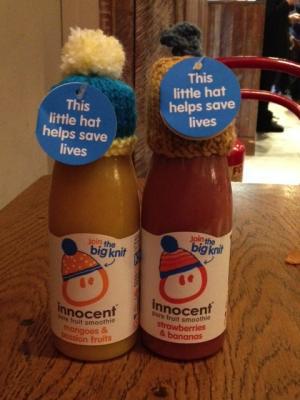Five steps to creating corporate partnerships
Have you seen the little woolly hats on top of Innocent smoothies and thought that’s brilliant? Or perhaps you’ve bought a packet of Pampers that includes a donation to UNICEF?
- Written by
- Remarkable Partnerships
- Added
- April 08, 2013
There are hundreds of charities working in partnership with companies, but there are thousands more charities that don’t. Maybe it’s because they don’t know where to start.
Here’s a five-step process for creating corporate partnerships.
Step 1 – clarify your BIG REASON WHY

Before you start engaging with companies you want to be clear on the BIG REASON WHY (BRW) you want to partner with them. What’s your charity’s goal and how could corporate partnerships help you achieve it?
This BRW should be emotive, brave and inspiring. For example, a hospice’s BRW could be, ‘in the next two years we will double the number of people we support so they can live their lives with dignity and peace’.
It’s important to be clear on your BRW from the start. By expressing it you will help to create a deeper connection with corporate prospects, which will mean you secure more and bigger corporate partnerships
Step 2 – identify your target companies

Identifying your target companies will help you secure the partners that you want because they will deliver for your beneficiaries. It will also give you more focus so you don’t waste your time on companies that aren’t a very good fit for your charity.
You should aim to create a list of your top 20 corporate prospects. This will probably mean that you start with a long list of between 50 and 80 companies. I suggest you look at three criteria for identifying your top prospects.
- Is the company a good fit with your charity?
- Does someone in your charity have a contact in that company?
- Does that company have the ability to make a meaningful contribution to your charity?
The companies that rank the highest for these three questions can then become your top 20 corporate prospects.
Step 3 – develop compelling opportunities

Companies can gain huge benefits from charities, such as greater awareness, increased trust and higher employee motivation. So charities have huge value to offer companies. The way to deliver that value is by giving them compelling opportunities.
Start by identifying areas of your work that companies are likely to find interesting. For example, a homeless charity may have a project that enables people to learn new skills so they can gain employment. This is very likely to appeal to companies because they understand the value of employment and it could offer some interesting volunteering opportunities for their employees.
The important step here is packaging. You need to package your opportunity so it’s inspiring, attractive and relevant to your target company. You should also give a choice of different ways in which they can get involved along with tangible business benefits.
Step 4 – engage your prospects

Now you’re ready to start contacting companies and the objective is to secure meetings with your target companies.
The best way to secure meetings is through introductions or referrals. So you need to know someone who has a contact at the company. LinkedIn is really useful for seeing where you have contacts, so encourage all your colleagues and people you know to connect with you. It’s also worth doing lots of networking, especially at events where your prospects are likely to be.
Once you’ve secured the meeting, you need to ensure you are thoroughly prepared. This means finding out as much as possible about the company and the person you’re meeting. I recommend you make an extra effort to gather valuable insight on your prospect, because it will show in the meeting and will give you an edge on your competitors.
Your objectives for your first meeting are to:
- Inspire them about your cause.
- Build rapport.
- Emphasise the fit between your two organisations.
- Find out their objectives.
- Agree to have a follow-up meeting.
So the first place to start is by telling them a powerful and emotional story about how your charity changes lives. When engaging corporate prospects you want to follow the NSPCC approach to fundraising, which is ‘open hearts, open minds, open
Step 5 – secure corporate partner
Immediately after your first meeting you want to follow up with concise notes of what was discussed at the meeting notes and lots of enthusiasm. At this stage your aim is to build the relationship and keep on inspiring them.
You also want to suggest a follow-up meeting and this should, ideally, be an opportunity for your contacts to visit to see the cause first hand. If that isn’t possible then introduce themto someone in your charity who can talk passionately about the cause.
It’s important to be patiently persistent. So when you believe they are inspired and clearly interested in a partnership, you can then suggest that you will create a proposal for partnering together. You then need to pull together an inspiring and powerful proposal that meets their and your objectives.
You can then send them the proposal and arrange a meeting to discuss it in more detail.
Now you’re getting close to securing a new corporate partner, but don’t be surprised if there is more inspiring, relationship building and negotiation before you get a definite yes.
When they say yes then you pop the champagne…
© Jonathan Andrews 2013.
















